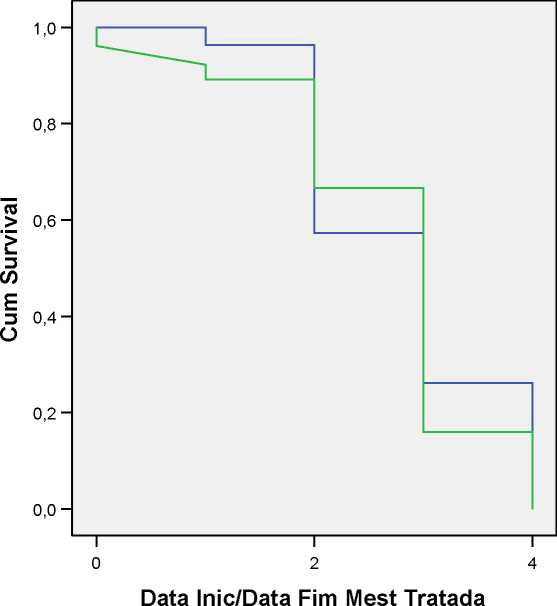more women than men needed more than 3 years to complete MSc.,
(moved into interval 3). Notwithstanding, time length distribution in which
concerns time needed for women to complete a Master seems to be bi-
modal: we should notice indeed that more women (3,7%) than men
(1,15%) also achieved the degree in the smallest time interval (1)19, taking
less than two years to get their MSc.
Survival Function at mean of covariates

Género
_П masculino
_П feminino
Will it be the case that those so high efficient women falling in the
left wing of the time distribution will be less family and/or work dependent
that the others who had to take three and more years to complete the
19 Actually, a not statistically meaningful number of individuals (n.s.m.) in the sample (2 female MSc.)
has been ranked into interval 0, equivalent to a time length lower than one year. But we won’t consider
this result unless further checking will allow for it.
25
More intriguing information
1. Studying How E-Markets Evaluation Can Enhance Trust in Virtual Business Communities2. Nurses' retention and hospital characteristics in New South Wales, CHERE Discussion Paper No 52
3. CONSUMER ACCEPTANCE OF GENETICALLY MODIFIED FOODS
4. The name is absent
5. Valuing Access to our Public Lands: A Unique Public Good Pricing Experiment
6. What Lessons for Economic Development Can We Draw from the Champagne Fairs?
7. From music student to professional: the process of transition
8. Tax systems and tax reforms in Europe: Rationale and open issue for more radical reforms
9. On the Real Exchange Rate Effects of Higher Electricity Prices in South Africa
10. The name is absent